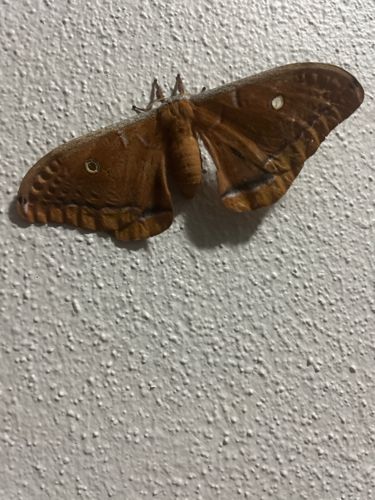Polyphemus Moth
Scientific Name: Antheraea polyphemus
Order & Family: Lepidoptera, Saturniidae
Size: Wingspan typically ranges from 10-15 cm (4-6 inches), making it one of the largest North American moths.

Natural Habitat
Forests, woodlands, suburban areas, and orchards across North America.
Diet & Feeding
Adult Polyphemus Moths do not feed during their short lifespan; they lack functional mouthparts. Their sole purpose is reproduction. Larvae (caterpillars) are polyphagous, feeding on a wide variety of tree and shrub leaves, including oak, maple, birch, willow, elm, and fruit trees.
Behavior Patterns
Polyphemus moths are nocturnal, flying at night, often attracted to lights. Males locate females by sensing pheromones. Adults emerge from their cocoons in late spring or summer and typically live for only a few days to a week. The caterpillars spin large silk cocoons, often incorporating leaves, which hang from host plants.
Risks & Benefits
Polyphemus Moths pose no direct risk to humans. Their caterpillars can defoliate host trees, but rarely cause significant damage to healthy mature trees. As pollinators (though incidental as adults don't feed) and part of the food chain, they contribute to ecosystem health. Their large size and striking appearance make them a subject of interest for naturalists and photographers.
Identified on: 9/11/2025